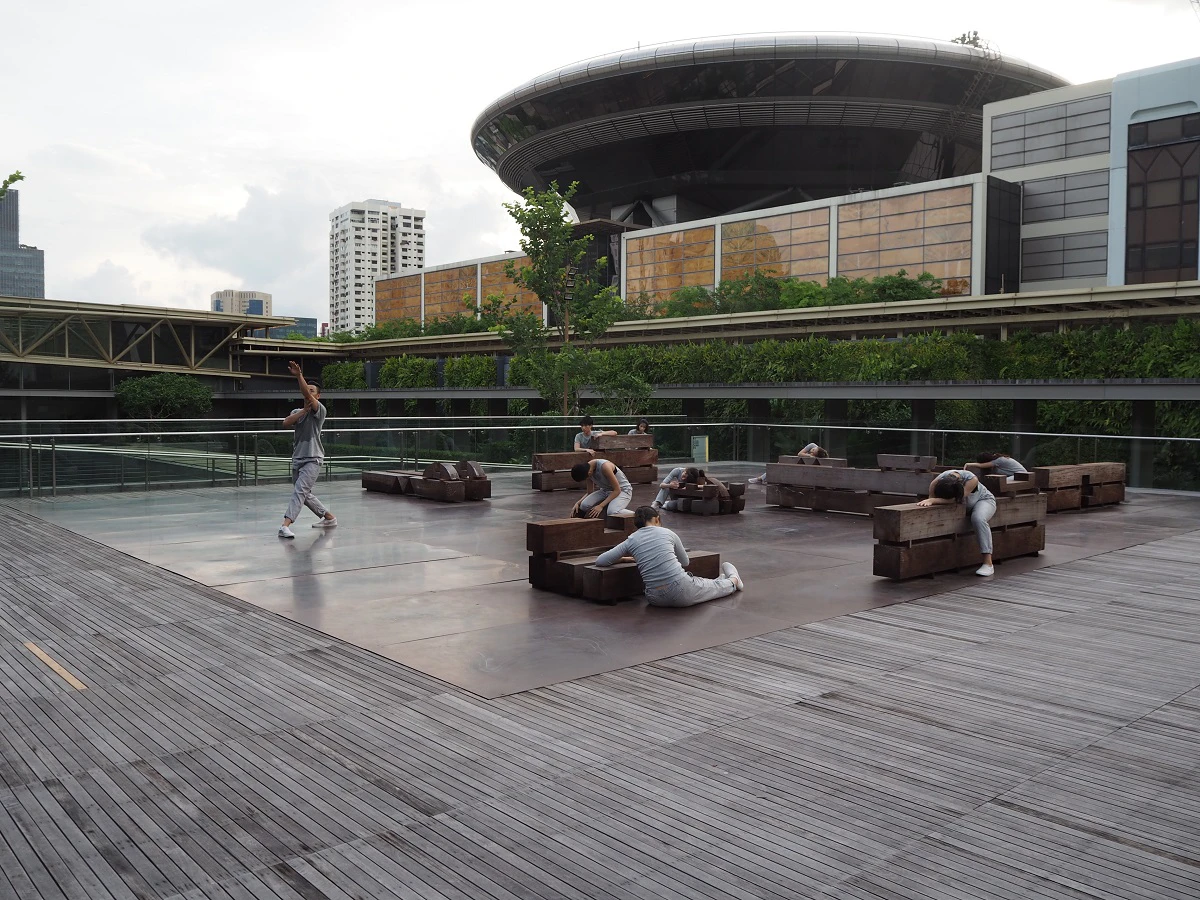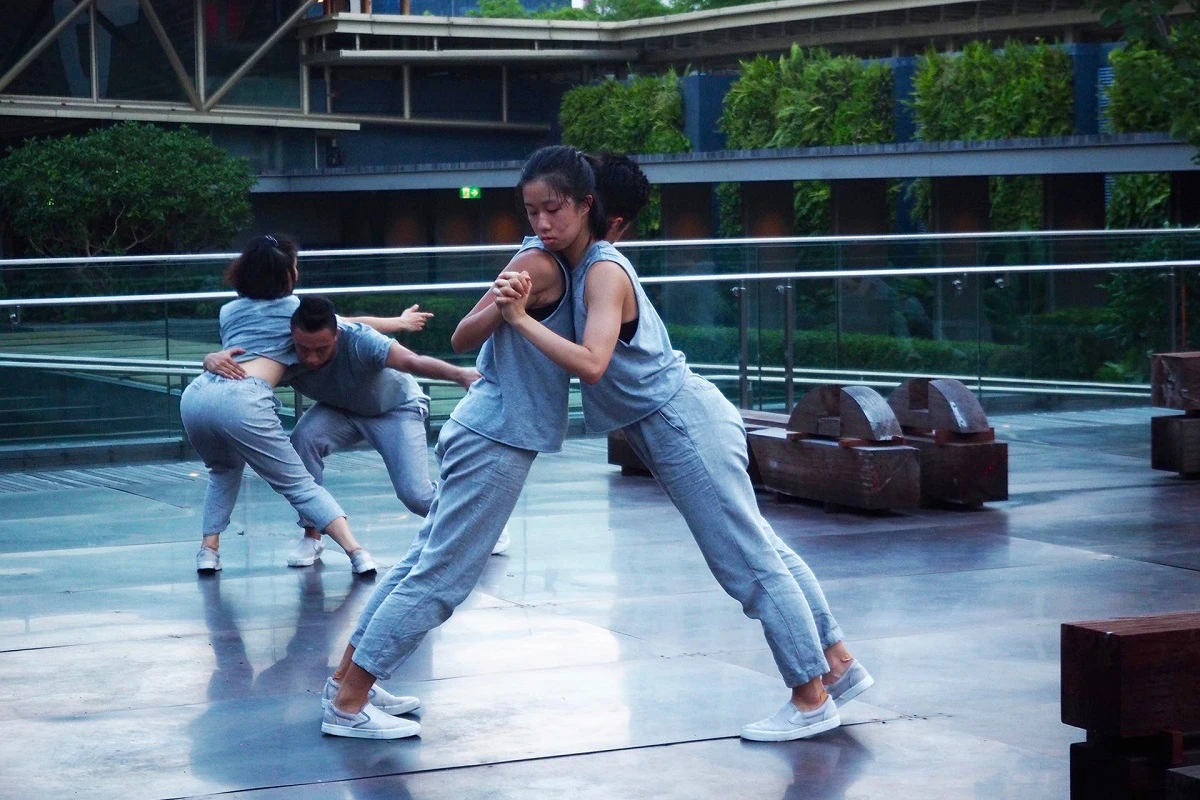Dancers from LASALLE Respond to Danh Vo’s Ng Teng Fong Roof Garden Commission
Sadiah Boonstra reflects on three dance responses to Danh Vo’s sculptural installation on the Gallery’s rooftop. It was the first public programme for the inaugural Ng Teng Fong Roof Garden Commission series.

Across three weekends in August and September 2017, 11 dancers filled the site of Vietnamese-born Danh Vo’s sculptural installation on the Gallery’s rooftop. It was the first public programme for the inaugural Ng Teng Fong Roof Garden Commission series. Susan Sentler, Lecturer (Dance) at LASALLE College of the Arts, was commissioned to develop a three-hour durational response to the sculptural installation, to provide visitors with a unique and sensorial experience of the work.
Danh Vo’s work, examining personal and global histories, was made of Vietnamese wood, with wooden pieces that connected in a jigsaw-like manner situated on a large copper plate. Two marble fragments of human-like body parts completed the work: one located on the installation on the rooftop, the other encased and tucked away in a corner near the Gallery’s Coleman Street Entrance.
In complete silence, nine dancers from different levels and programmes in LASALLE performed a repeated series of movements as a structured improvisation on the sculptural installation on the rooftop. The dancers moved individually, and occasionally in pairs, in reference to the human-like artefacts, echoing forms in the installation and site: the bodily embrace, geometrical shapes of the installation and the surrounding cityscape.
Two other dancers moved in a completely different context at near the encasement of a seemingly orphaned marble bodily fragment titled ydob eht ni mraw si ti. This part of the installation went largely unnoticed, but amid large crowds of families with kids, the two dancers drew attention to the isolated fragment by being completely still for long periods of time. They lay down on the floor, nesting around the case. They leaned against the wall and each other.
The audience’s reactions were stunning. Visitors were surprised, confused and curious. They mistook the dancers for sculptures, even posing with them for pictures. Children wanted to touch the dancers. In a few instances, they did so, some even mimicked the still positions of the dancers. It was beautiful to see audiences sit down around the sculptural installation to watch the dancers, take time to be quiet, observe and notice. The dance became more than a response to an artwork. It grew into a work itself, created in relation to the architectural context and the art installation it existed in, connecting to the specific nature of the site.
Image Gallery




















